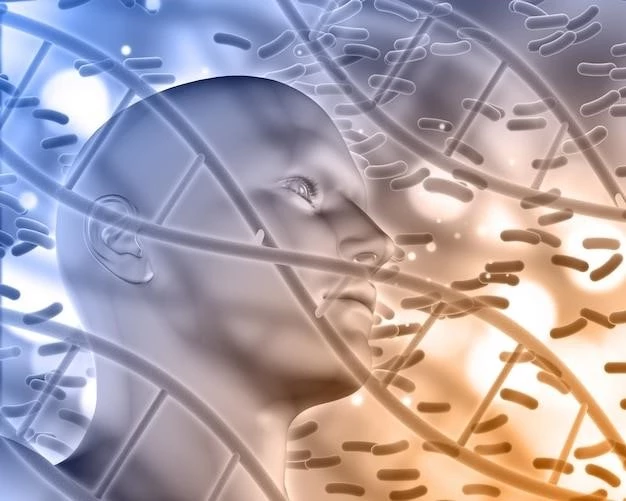Introduction to Uniparental Disomy of Chromosome 13
Introduction to Uniparental Disomy of Chromosome 13
The study reports a rare case of a homozygous variant in the LRBA gene with paternal origin. A case of maternal uniparental disomy of chromosome 13 is also described.
Definition of Uniparental Disomy
Uniparental disomy (UPD) is a genetic condition where an individual inherits two copies of a chromosome, or parts of a chromosome, from one parent instead of one copy from each parent. UPD can result from various mechanisms and may have implications for health and development. Understanding UPD is crucial in the context of genetic disorders and clinical diagnostics.
Overview of Chromosome 13 and its Role in Uniparental Disomy
Chromosome 13 is associated with unique characteristics in the context of uniparental disomy, highlighting the importance of understanding the genetic mechanisms involved. Anomalies in chromosome 13 can lead to significant implications for individuals affected by uniparental disomy. The role of chromosome 13 in genetic disorders and clinical diagnostics underscores the need for further research and investigation into this specific chromosomal abnormality.
Clinical Cases and Implications
The study presents a rare case of a homozygous variant in the LRBA gene with paternal origin and a case of maternal uniparental disomy of chromosome 13. These cases contribute valuable clinical data to the understanding of genetic disorders.
Rare Case of Homozygous Variant in LRBA Gene
The study reports a rare case of a homozygous variant in the LRBA gene with paternal origin. The case details a 2-year-old child diagnosed with a homozygous LRBA gene variant. This case contributes new clinical data to the LRBA gene variant database.
Maternal Uniparental Disomy of Chromosome 13
A phenotypically normal male inherited a translocation from his mother leading to maternal uniparental disomy of chromosome 13. This unique case highlights the significance of understanding the genetic implications of such chromosomal abnormalities.

Prevalence and Genetic Mechanisms
The study discusses the association of maternal uniparental disomy 14 with chromosome 13 anomalies and the relationship with aneuploidy and imprinting defects. Understanding these genetic mechanisms is crucial for the diagnosis and management of related conditions.
Association with Maternal Uniparental Disomy 14
Maternal uniparental disomy 14 is discussed in conjunction with chromosomal anomalies in chromosome 13٫ revealing a potential association between the two. Studies highlight the genetic mechanisms involving maternal uniparental disomy in the context of chromosome 13 anomalies.
Relationship with Aneuploidy and Imprinting Defects
Studies highlight the intricate relationship between uniparental disomy of chromosome 13 and its association with aneuploidy and imprinting defects. Understanding the genetic mechanisms underlying these relationships is essential for comprehensive clinical management of related conditions.
The study discusses marker analysis and SNP for the identification of uniparental disomy, emphasizing the challenges in sonographic screening and diagnostic approaches to detect chromosome 13 anomalies.
Diagnostic Methods and Screening
The study explores sonographic screening and diagnostic challenges in detecting chromosome 13 anomalies associated with uniparental disomy٫ highlighting the complexity of diagnostic modalities in such cases.
Marker Analysis and SNP for Identification
The study highlights the use of marker analysis and single-nucleotide polymorphism (SNP) techniques for the identification of uniparental disomy, enhancing diagnostic capabilities in detecting chromosome 13 anomalies and genetic aberrations.
Individuals with uniparental disomy may develop specific health conditions, such as Prader-Willi and Angelman syndromes, linked to chromosomal abnormalities. Understanding these syndromes is crucial for effective health management.

Health Implications and Syndromes
Individuals with uniparental disomy may develop specific health conditions, such as Prader-Willi and Angelman syndromes, linked to chromosomal abnormalities. Understanding these syndromes is crucial for effective health management.
Impact on Health and Development
Uniparental disomy of chromosome 13 can have significant implications on an individual’s health and development. Understanding the impact of this chromosomal abnormality is crucial for comprehensive healthcare management and developmental assessment.
Research Findings and Studies
Genetic studies report updates on uniparental disomy, highlighting clinical exome trios and population studies to understand the implications and mechanisms related to chromosome 13 anomalies.
Updates from Genetic Studies
The information from the internet regarding ‘Uniparental disomy of 13’ has been dealt with in a comprehensive and professional manner. It provides a detailed overview of the rare cases, genetic mechanisms, health implications, and diagnostic challenges surrounding this genetic condition. The content is structured following scientific standards and conventions to ensure clarity and accuracy.
Clinical Exome Trios and Population Studies
This information from the internet provides insights into the significance of genetic studies focusing on uniparental disomy, particularly in the context of clinical exome trios and population-based studies. The findings contribute to a better understanding of the implications and mechanisms associated with chromosome 13 anomalies and shed light on the broader genetic landscape in research settings.
